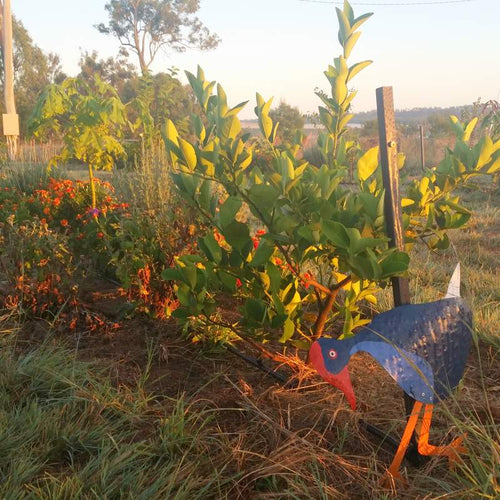Permaculture principles - Obtain a yield
In his book Permaculture: Principles and Pathways beyond Sustainability (affiliate link), David Holmgren, one of the founders of permaculture, has written about 12 design principles. Obtain a Yield is the third permaculture principle. In this post I summarise this chapter and give examples from my own experience.
What's the difference?
The distinction between "Catch and Store Energy" and "Obtain a Yield" can be a little confusing at first, and they do overlap, but the first is more about long-term planning, such as water storage and growing trees, whereas the latter is about planning for immediate returns from the property. Both principles need to be considered in planning our garden, pasture and animal husbandry.
Maximising the returns from our effort
David Holmgren writes about the "maximum power law", which states that there is a point where you obtain optimised return from effort and/or money, if you put in more effort your returns on an energy basis decline, with less effort you do not obtain the maximum efficiency.
For example, if you plant potatoes there is an optimal amount of effort to be spent when digging the potatoes. You could spend too long trying to find every last tiny potato and waste your time on a kg/hr basis, or if you're lazy and don't dig enough, you may miss some large potatoes resulting in lower kg/hr of potatoes.
This is also true when comparing vegetables, some take so much effort for a small crop (in my case tomatoes need daily attention), while others seem to grow in spite of complete neglect (silverbeet). Unless you really like tomatoes, its probably best to focus on those plants (and activities) that produce the most with the least effort or input from you as the gardener. This is also true when designing buildings or landscaping, we should aim for low maintenance and fit-for-purpose.
Focus on hardy varieties
In particular, David suggests that we use hardy varieties or breeds that are well- adapted to our local environment. For example Braford cattle are more tick-resistant than English breeds, which means we don't have to spend as much time looking after them or spend money on chemicals.
Efficient synergies
Another interesting aspect is the efficiency that can be achieved in the home garden compared to industrial agriculture. We can use all our produce in some way, even if it ends up in the compost or the chook pen, it eventually contributes to our yield, whereas industrial agriculture produces vast amounts of wasted food that is not up to supermarket standard. Sometimes we need to think creatively to see how we can obtain a yield, and part of that is preserving food during gluts so that we can use it later.
An excellent resource on the subject of eating local is Arabella Forge's Frugavore.
How do you obtain a yield?
Find out more about Permaculture using these books (affiliate links):
And the other posts in this series:





















Leave a comment